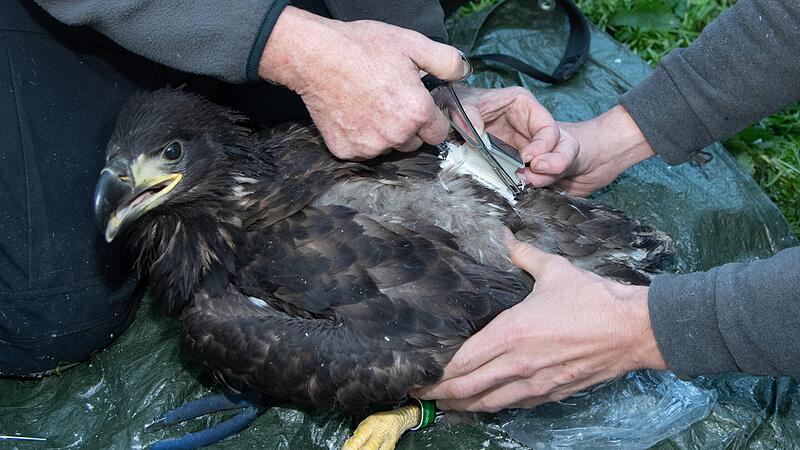Five young white-tailed eagles were equipped with transmitters this year as part of the research and protection program of the nature conservation organization WWF Austria. While the animals are supposed to leave their nests in a few weeks, the sea eagle “Orania” has already set a long-distance record. In 2019, “Orania” was hatched and tagged in the Donau-Auen National Park and flew 2,300 kilometers between January and May to the Northern Dvina River in Russia.
“We have never been able to document such a long journey by a white-tailed eagle from Austria. It has doubled the previous record. Orania seems determined on a peace mission,” Christian Pichler, WWF (World Wide Fund for Nature) white-tailed eagle expert, said in a broadcast on Thursday quoted.
45 breeding pairs in Austria
In 2000, the local heraldic animal was still considered extinct, today around 45 breeding pairs of white-tailed eagles live in Austria, so for the WWF it is a success story of local nature conservation. “‘Oranias’ journey across all borders underlines the importance of international protective measures. They are the cornerstone for the return of this formerly extinct species,” explained Pichler. In Austria, Lower Austria, Burgenland, Styria and Upper Austria in particular offer these eagles habitat again. The eagles would find important feeding, breeding and resting areas in the Waldviertel, Donau-Auen National Park, in the March-Thaya-Auen or areas of Pannatura, a company of Esterhazy.
The tagging of the young eagles provides important information about their flight routes and habitats after leaving their parents’ territories. They usually return there after four to five years to breed themselves. “On the basis of the transmitter data, we can continuously optimize international cooperation in the protection of white-tailed eagles,” explained the eagle expert. The feather-light GPS-GMS data carriers do not affect the movements of the eagles and fall off by themselves after a few years. Rings from the Austrian Ornithological Institute attached to the legs also ensure that the animals can be identified throughout their lives.
Despite the slowly growing but stable population, the survival of the white-tailed eagle in Austria is not yet permanently secured. Illegal persecution through shooting and poisoning, but also collisions with vehicles, power lines or wind turbines are constant and major threats to the eagle. “By using the transmitter, deaths can be traced quickly. Criminal offenses can be cleared up better and the infrastructure along the flight corridors can be planned accordingly,” explains the WWF expert. “Protective measures in Austria and our neighboring countries must be consistently continued if we want to continue to successfully write the return of the white-tailed eagle as a chapter in nature conservation history,” appealed Pichler. The white-tailed eagle monitoring 2022-2024 is funded by the biodiversity fund of the Federal Ministry for Climate Protection, Environment, Energy, Mobility, Innovation and Technology.
Source: Nachrichten




